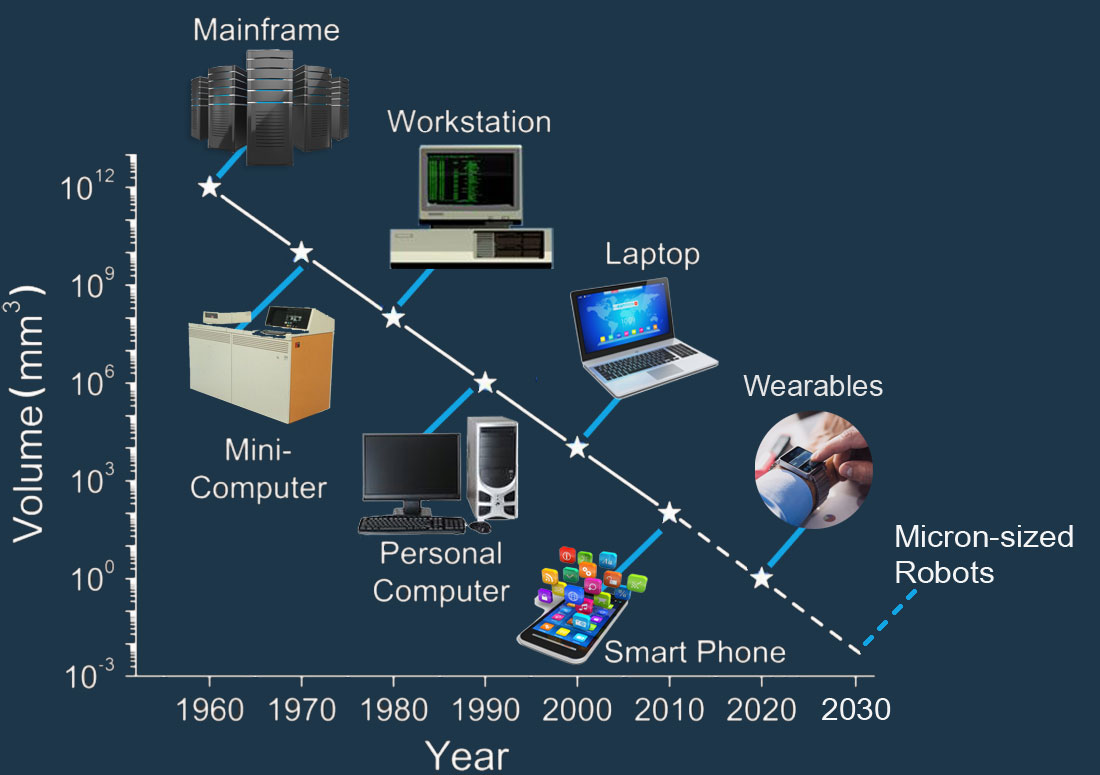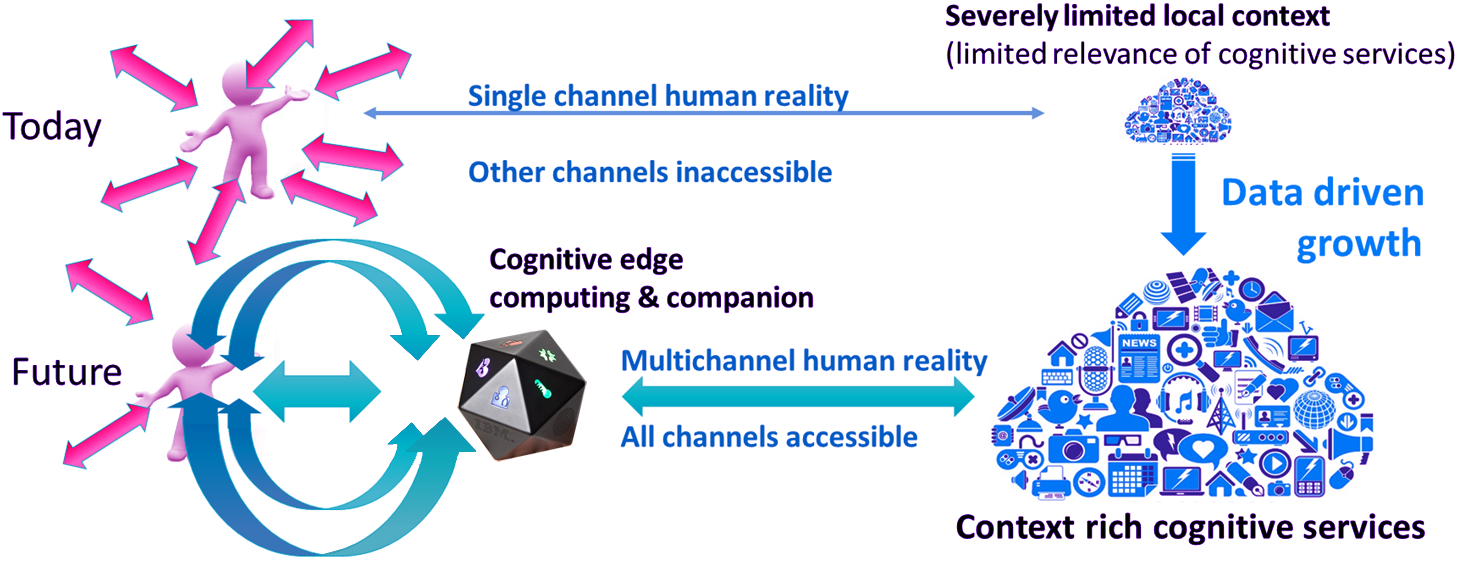“Future supercomputers will be based on technology classes that work with the tiniest of systems: Wearables and IoT devices.”
—IBM scientist Bruno Michel
In this project, we focus on integrating individual computers for wearable / Internet of Things (IoT) applications and for edge computers.
We also focus on integrating ever more complex computers systems for future large cloud data centers.
Our main focus is on vertical integration, starting from sensor technologies and energy harvesting to data acquisition and energy provisioning to data analytics and machine learning.
Ask the expert

Bruno Michel
IBM Research scientist
The computer industry has gone through several phases characterized by different computer classes: Mainframes, then PCs, mobile phones and—most recently—wearables and IoT devices. All these computer classes emerged and grew, but they were subsequently replaced by the next generation of computers [1].
This trend also applies to the technology classes on which computers are based: A new technology class differs from its predecessors by serving an overall addressable market that is 10 times larger than the previous one, and by achieving 100 times the density and efficiency at 1/100th of the former cost.
This is why future supercomputers will be based on technology classes that work with the tiniest of systems: Wearables and IoT devices. Owing to the larger addressable market, these devices will mature faster than former technologies and eventually replace them.
Smart systems include sensing and intelligence that understands a situation. They will make predictive and adaptive data-driven decisions and perform smart actions. The cognitive intelligence of such systems is built on energy-efficient autonomous operation, closed-loop control and communication functionalities.
A major challenge is the integration of many diverse components that combine different technologies and materials. The focus is on services for particular applications, for example in the healthcare and automotive sectors.
The term “smart” reflects the embedded processing capability as well as the full awareness of the environment that becomes possible with the introduction of sensing capabilities, thus bringing together interdisciplinary technologies and solutions.

Development of computers from mainframes to millimeter-scale sensors, IoT devices and wearables.
Human-centric sensing and computing
Contextual understanding of human behavior is the key puzzle piece to providing personalized cognitive services.
Today, only few of the required behavioral indicators are available to cognitive engines.
To acquire this data, we need smart interfaces to “access humans”, the largest data source.
Personalized cognitive services will be relevant in many current and future markets, which represent a total market of several hundred billion $US, e.g.–health, workforce of the future, education, advertising, travel, media and communication.
We also need the right tools. A framework for better understanding and modeling human behavior by complementing global with local human context allows cognitive systems to operate in a more accurate and context-relevant manner.
Specific technologies
Cognitive services
Wearables
High-bandwidth data aggregation
Energy-efficient edge computing & sensing
Raising the energy “umbrella”
New sensors & sensor network integration
Full vertical integration with emotional feedback loops
Security & leading heterogeneous integration
Human–computer interface
A context for much better digital access to humans reduces the perception of
an interface between computers and humans and allows more digitally enabled services.

Disappearing human–computer boundaries
Smart autonomous machines drive radical shifts in business practices and individual behaviors, which creates a need to develop harmonious relationships between people and machines.
Wearables improve worker effectiveness and safety and enable new insights through workplace analytics.
The human–machine interface becomes multimodal and personalized.
Wearable devices enable many new experiences and digital business opportunities, but a fragmented landscape is a challenge to developers.
Emerging technologies are becoming more human-centric: A tipping point is quickly being reached whereby technology is used to reflect and enhance business and human experiences, rather than businesses and humans having to change to support emerging technologies.
There is an opportunity for an integrator to provide an umbrella over the fragmented landscape and quickly drive the field to maturity so that it can deliver the promises made.
Physical integration
Physical integration is very important for wearables and IoT devices.
Our physical integration efforts serve two purposes
- To advance technology for wearables and IoT devices
- To improve energy efficiency and performance of servers.
Physical integration projects and processes are described under “Functional electronic packaging.”
References
[1] G. Bell, “Bell’s Law for the Birth and Death of Computer Classes,” Communications of the ACM 51(1), 86–94 (2008).
[2] B. Michel, “The Future of Computing,” Project Syndicate, 30 June 2016.
[3] “European Commission seeks input on a Reflection and Orientation paper on Smart Wearables,” European Commission Reflection and Orientation Paper, 2 December 2016.
[4] P. Ruch, T. Brunschwiler, W. Escher, S. Paredes, and B. Michel, “Toward five-dimensional scaling: How density improves efficiency in future computers,” IBM J. Res. Develop. 55(5), 15:1-13 (2011).
[5] P. Ruch, T. Brunschwiler, S. Paredes, I. Meijer, and B. Michel, “Roadmap towards Ultimately-Efficient Zeta-Scale Datacenters,” Design, Automation, and Test Conference (DATE), March 18-22, 2013, Grenoble, France.